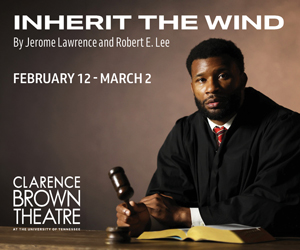A sensation almost dreamlike and otherworldly permeated the Tennessee Theatre this past Thursday and Friday evening as the Knoxville Symphony Orchestra began its 2021-22 season of Masterworks concerts. Having juggled their vaccination credentials, satisfied the contraband checkers, and offered up the now ubiquitous barcodes on smartphones or printouts for entry, arriving audience members then wandered—somewhat dazed—about the lobby, secretly overjoyed and thankful that they were once again where music was to be made, even if they didn’t quite recognize their friends behind the masks. All this added to the excitement and sense of importance of the occasion, made strangely complex by the twists and turns of life in a pandemic that have been endured over the last 18 months or so.
While returning to pre-pandemic audience levels will be a continuing task for the KSO, some of the obvious reticence to attend public events is naturally understandable. It would also be understandable if the orchestra’s own performance on the concerts had indicated early-season jangled nerves or tentativeness. Miraculously, this was not the case. This boldly programmed and beautifully performed concert of works by Valerie Coleman, Antonio Vivaldi, and Edward Elgar featured solid ensemble playing and a satisfying orchestral balance in which brass, percussion, winds, and strings seemed to breathe as one.
The titular work of the evening was Antonio Vivaldi’s The Four Seasons, the group of four Baroque-period string concertos that some may argue has been done in by its own popularity in everything from film scores to ringtones. In general, though, the work can transcend this unfortunate ubiquity when handled intelligently and performed with insight and vitality, which was the case here. On this occasion, Maestro Aram Demirjian had invited Knoxville poet laureate Rhea Carmon and her poetry collective, The Fifth Woman, to reimagine the work with the orchestra. Beautifully presented by Carmon, Heather Davis, Drew Drake, and Taria Person, their created text acted either as introduction or as interwoven story throughout—all as an exploration and sharing of a year of seasons through Carmon’s community lens.

Playing off of the presence of the crisply performed text, violinist Robyn Bollinger made a compelling case for being the perfect choice for The Four Seasons. This impressive violinist, last heard with the KSO several years ago in the Tchaikovsky Violin Concerto, brought an intelligent and descriptive phrasing that was supported by a stunningly energetic and accomplished technique. Her beautiful razor’s edge of clarity and precision in fast moving, emphatic sections was contrasted with a gorgeous overall tone. The meshing of soloist with Demirjian and the string ensemble was everything a Vivaldi lover could have hoped for.
Admittedly, combining a music performance with another art form, as was done here, has its risks. For example, adding visuals to a concert work can prove distracting, or in some cases, outright destructive to a composer’s intent. In the case of this Four Seasons, however, it worked out beautifully for both music and poetry, the combination creating something new, something more than just the sum, or difference, of its parts.
Demirjian opened the concert with the relatively new orchestral version of Valerie Coleman’s Umoja: Anthem of Unity, handled here by the KSO with deftness and precision. The work was originally written as a wind quintet for Coleman’s own chamber music ensemble, Imani Winds, in 2001. The Philadelphia Orchestra under Yannick Nézet-Séguin commissioned this new version in 2019. The work is a journey through America, not so much a journey of geography, but one of historical issues that have threatened us, and continue to do so. As a result, the work is a sophisticated mix of edges and substance, reality and abstractions, that arc through a range of emotions and through a diversity of instrumental color to explore the work’s theme.
While we may have entered the theatre in a dreamlike state, the closing work carried us into the night with a different emotion. There really was no puzzle as to the inclusion of Edward Elgar’s “Enigma” Variations as the sole work on the second half of the evening’s program. Admittedly popular and oft-performed, the work is extremely accessible and unendingly tuneful with irresistible moments of poignance. The added attraction of Elgar’s unsolved enigma—“through and over the whole set another and larger theme ‘goes’, but is not played …”—make it much like a lovable, but eccentric, uncle.
Demirjian managed a nice overview with the work, properly pacing the variations and smoothing over the episodic traps that can slow the piece down. Responding to the maestro’s requests, the orchestra gave back a beautifully shaped and textured work that was a rich display of dynamics. Individually, there were beautiful showcase moments and sectional sparkle in a number of the variations: violist Katherine Gawne in the 6th variation (“Ysobel”) and cellist Andy Bryenton in the 12th (B.G.N.). Of course, the 9th variation (“Nimrod”) lived up to its popular reputation for producing verklempt reactions, played here with a grand and noble poignance. The final movement, “E.D.U.” Elgar’s own self-portrait, was filled with strength, energy, and optimism—certainly the right characteristics with which to end a concert as we regain our music foothold and go into tomorrow with hope and determination for better days.






